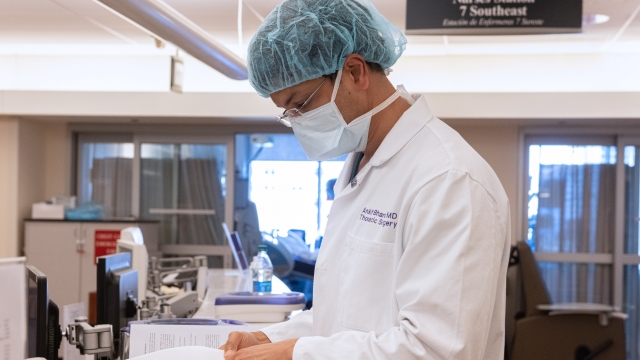The exam room is a familiar place for Josh Burton. The 17-year-old has resiliently made it through two different double lung transplants in the past three years.
"He went through the one lung transplant, went through the second one being so many times on the edge to survive," said Kelly Burton, Josh's mom.
In 2020, doctors diagnosed Burton with pulmonary veno-occlusive disease. The small blood vessels in his lungs responsible for bringing oxygen to his heart were narrowing and failing. In 2021, he received his first double lung transplant at home in Wisconsin.
"I kept saying, I didn't want to die because I was only 14 and I haven't got into anything — life, or high school, or go to prom or drive a car," said Josh.
In 2022, just a year post-transplant Burton caught RSV. Being that he was immunocompromised, his new lungs failed fast.
Doctors would give Burton a lung retransplantation, or a second set of new lungs.
"He was sick enough and probably one of the sickest in the country," said Kelly Burton.
SEE MORE: Doctors transplant a pig's heart into a human for the second time
Lung retransplantation is extremely rare, about 5% of total adult lung transplant worldwide, but researchers project an increase in the future as lung transplants increase themselves.
A lung transplant has about a 50%-60% survival rate at the five-year mark, 40% for children. Chronic conditions, side effects from immunosuppressants and lung cancers drive up complications.
The pandemic has changed the lung transplant landscape too. For Burton, it meant his doctors were more confident in taking his difficult case.
We first spoke in 2021 to Northwestern's chief of thoracic surgery Dr. Ankit Bharat about this. At the time, 1 in 10 lung transplants were for COVID patients.
"We've learned from doing these transplants is that, transplants can be used within the treatment paradigm of infections or infections causing permanent organ damage," said Bharat.
"They have scars from the previous surgery and we call it adhesion. The lungs are a little bit tighter connected to the chest, so it's a little bit harder to remove the sick lungs," said Dr. Rade Tomic, a pulmonologist at Northwestern Medicine.
It's a little more than three months post transplant, and Burton is healing well, and back to thinking about teenage things — his senior year back in Wisconsin and pursuing his childhood dream of being a paleontologist.
"Ever since I learned about paleontology, I really didn't have any other careers I wanted to be. It just was, like, an instinct," said Josh Burton.
And while dust and digging won't be in the cards — it's too much of a risk for his lungs — that's not stopping him. His medical team recently helped coordinate an in-depth look at how paleontologists work at Chicago's Field Museum.
Trending stories at Scrippsnews.com




